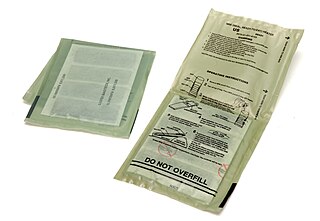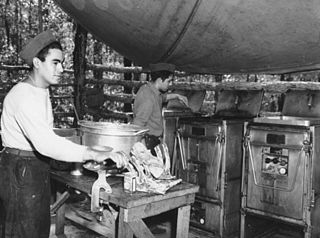| Menu and number | Meals | Desserts | Condiments and beverages |
|---|
| Breakfast 1 | Turkey bacon, chicken burrito | Date walnut breakfast cake, toaster pastry, oatmeal | Orange juice |
| Breakfast 2 | Cheese omelet, vegetable sausage patties, bacon | French toast apple bake, peanut butter chocolate bar | Peanut butter, grape jelly, apple juice |
| Breakfast 3 | Steak, French toast taquito | Mixed berry muffin | All-purpose sauce, fruit punch |
| Breakfast 4 | Chicken sausage patty, breakfast bowl with turkey ham | Pancakes, cinnamon streusel muffin | Peanut butter, strawberry jam, pancake syrup, grape juice |
| Breakfast 5 | Vegan breakfast burrito, breakfast fried rice with turkey sausage | Lemon oat bar, granola bar | Orange juice |
| Breakfast 6 | Chicken and waffle sandwich, beef sausage links | Doughnut stick, oatmeal | Peanut butter, grape jelly, apple juice |
| Breakfast 7 | Chicken and biscuits, creamed ground beef | Cranberry orange loaf | Biscuit gravy, Worcestershire sauce, grape juice |
| Lunch/Dinner 1 | Korean barbecue chicken thighs, brown rice, green beans | Raspberry cheesecake bites, peanut butter chocolate bar | All-purpose sauce, tea, energy drink |
| Lunch/Dinner 2 | Bulgogi, Thai sweet chili chicken, basmati rice, carrots | Espresso brownie with salted caramel frosting, strawberry breakfast bar | Cold brew coffee, drink mixes, pink lemonade |
| Lunch/Dinner 3 | Shrimp and grits, vegetarian chili, brown rice, carrots and peas | Strawberry shortcake, granola bar | Peanut butter, grape jelly, tea, peach mango drink |
| Lunch/Dinner 4 | Turkey with gravy, stuffing, mashed potatoes, sweet potatoes, green beans | Apple pie log | Cranberry sauce, energy drink, watermelon drink |
| Lunch/Dinner 5 | Beef and broccoli, spring rolls, basmati rice, carrots | Chocolate chantilly cake | Sriracha, cold brew coffee, drink mixes, energy drink |
| Lunch/Dinner 6 | Chicken balls with tomato sauce, macaroni, peas and carrots | Salted caramel mini Bundt cake, granola bar, applesauce | Tea, peach iced tea |
| Lunch/Dinner 7 | Grilled steak, mashed potatoes, corn | Chocolate cola cake, granola bar | Peanut butter, strawberry jelly, gravy, all-purpose sauce, drink mixes, energy drink |
| Lunch/Dinner 8 | Barbecue pork ribs, fried chicken, collard greens, macaroni and cheese | Veggie cornbread, chocolate and vanilla cupcakes | Gravy, barbecue sauce, tea, iced tea |
| Lunch/Dinner 9 | Jambalaya, Creole pasta with shrimp and catfish, green beans | Ranger cookie, granola bar, applesauce | All-purpose sauce, drink mixes, watermelon drink |
| Lunch/Dinner 10 | Chicken and vegetables in Monterey Jack cheese sauce, brown rice, peas and carrots | Pineapple mini Bundt cake, granola bar, peaches | Cold brew coffee, peach iced tea, energy drink |
| Lunch/Dinner 11 | Salmon in mango chili sauce, cheese tortellini primavera, primavera rice, peas | Blueberry fruit tart, apple cinnamon breakfast bar | Peanut butter, grape jelly, all-purpose sauce, energy drink |
| Lunch/Dinner 12 | Roast chicken quarters, quinoa rice blend, carrots | Carrot cake, granola bar, applesauce | All-purpose sauce, iced tea, drink mixes |
| Lunch/Dinner 13 | Chicken cordon bleu, mashed potatoes, green beans | Red velvet mini Bundt cake, blueberry breakfast bar, peaches | Gravy, cold brew coffee, tea, peach mango drink |
| Lunch/Dinner 14 | Beef short ribs, mashed potatoes, corn | Pecan praline cake | Peanut butter, strawberry jam, gravy, all-purpose sauce, barbecue sauce, tea, pink lemonade |
| Short Order 1 | Philly cheesesteak, green beans | Granola bar | Energy drink |
| Short Order 2 | Beef taco kit, brown rice, corn | Granola bar | Watermelon drink |
| Short Order 3 | Chicken wings, corn | Strawberry breakfast bar | Barbecue sauce, pink lemonade |
| Short Order 4 | Hamburger, hot dog, vegetarian chili, baked beans | Apple pie log | All-purpose sauce, peach mango drink |
| Short Order 5 | Vegan chicken tenders, baked beans | Blueberry breakfast bar | Barbecue sauce, watermelon drink |
| Short Order 6 | Breaded shrimp, macaroni primavera | Peanut butter chocolate bar | All-purpose sauce, pink lemonade |
























